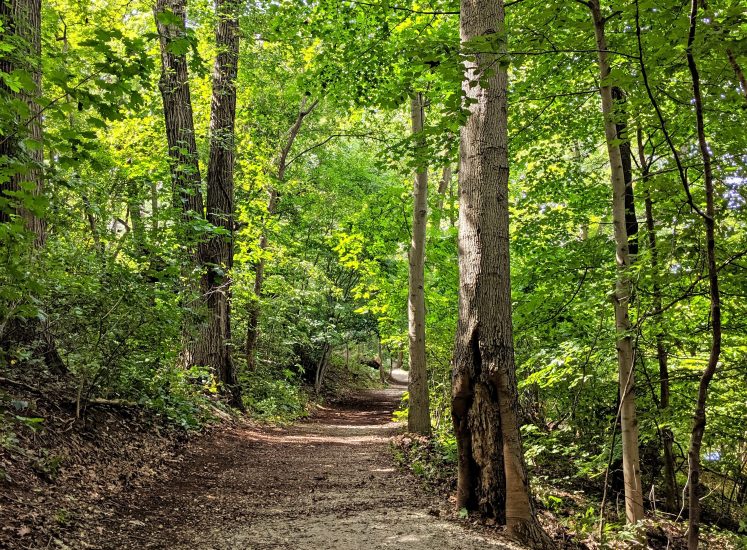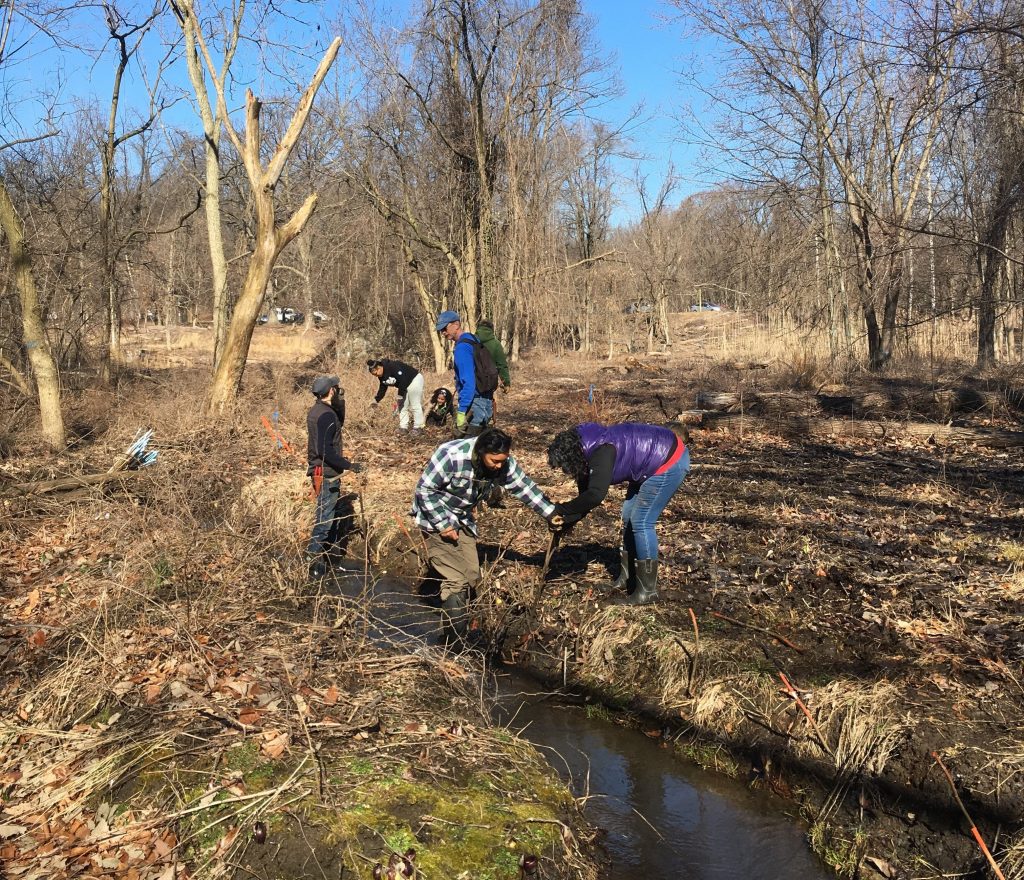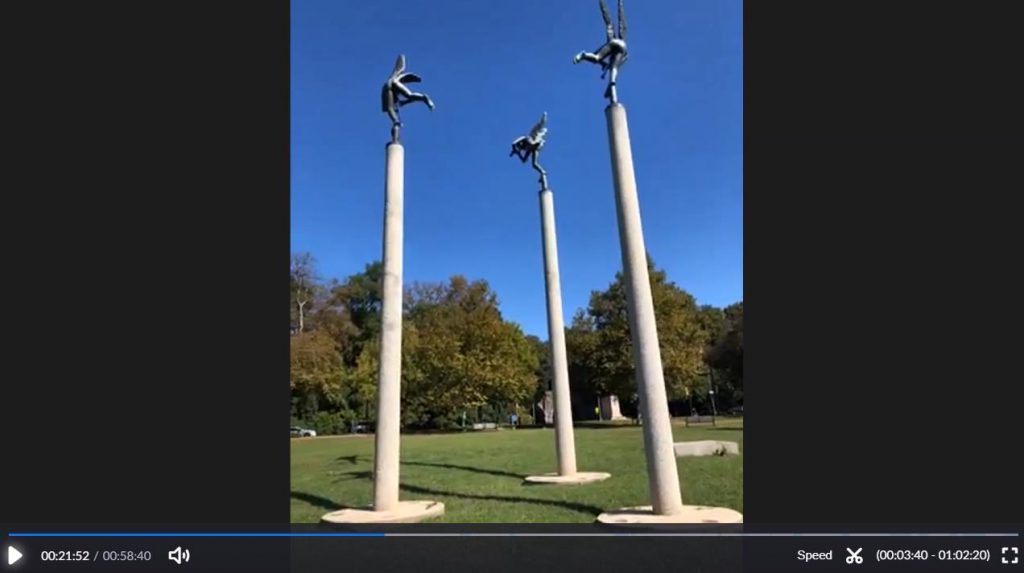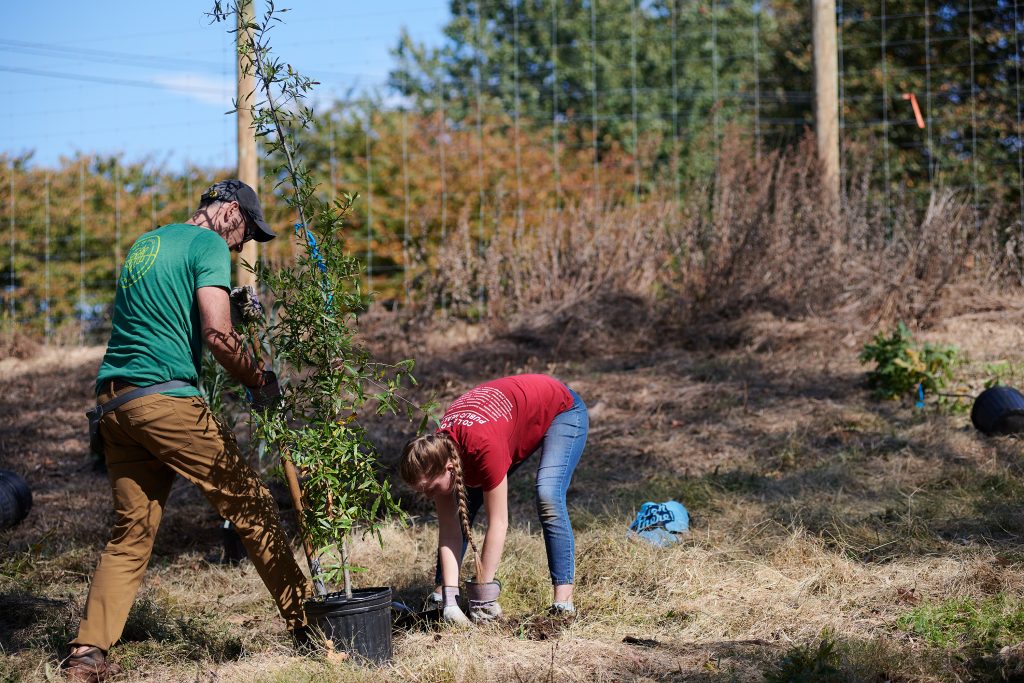Last September, four local leaders got together for a conversation about Philadelphia’s tree canopy and how it relates to climate change and environmental justice. Aptly called “More Trees, Please,” the virtual session was part of Green Philly’s Climate Resiliency Symposium.
The panelists included Erica Smith Fichman, Community Forestry Manager at Philadelphia Parks & Recreation; Maura McCarthy, Executive Director of Fairmount Park Conservancy; Tim Ifill, Associate Director of Trees at Pennsylvania Horticultural Society; and Ruth Birchett, Founder of Heritage CDC. The panel was moderated by Paige Carlson-Heim, Director of theTD Charitable Foundation.
The conversation is timely as Philadelphia, despite invaluable efforts like TreePhilly and PHS Tree Tenders, has lost 6% of its tree canopy over the last 10 years, according to a recent study. Tree canopy refers to the amount of land in the city covered by tree leaves and branches, and it matters because it is the source of the benefits that trees provide: shade for cooling in the summer, rainfall absorption to reduce flooding, and pollution reduction via catching particulates from the air.
All of the speakers agreed that the residents of Philadelphia have the power to impact our tree canopy and offered a variety of answers to the final question of the session, “What can people do to make a positive impact on Philadelphia’s urban forest?” Below are seven actions Philadelphians can take to protect our urban forest today!
1. Plant a tree on your property (if you have the space). And choose wisely.
“We tend to think about land as individual parcels that exist in a vacuum, but trees remind us that everything is interconnected. When we plant a tree in our yard, we are giving those benefits to everyone else on the block.” – Erica Smith Fichman.
Whether purchasing a tree (we recommend Bartram’s Garden, Red Bud Nursery and Tree Authority) or getting one from TreePhilly, planting a tree (and making sure to care for it) is probably the most direct thing residents can do. If you are involved with a community organization in your neighborhood, you can also volunteer to host a tree giveaway during an upcoming season.
2. Get connected to the Philly Tree Plan
Philadelphia has a 20% tree canopy across the city, and as this map shows, it is not equitably distributed. For the past 10 years, partners across the city have been working to increase tree canopy to 30% in every neighborhood, the stated goal in the City’s Greenworks Plan which speaks to the need for an equitable distribution of canopy. Despite our best efforts, canopy has actually declined. The good news: Philadelphia is embarking on the Philly Tree Plan, which will bring together stakeholders from across the city, state and country to lay out a plan for the growth and care of our urban forest. The term urban forest encompasses every single tree in the city; that includes park, street and yard trees, trees on vacant land, in alleyways, and the trees on commercial or industrial land.
The Philly Tree Plan is seeking your input! They’ve got a survey, a photo contest and a virtual open house where you can share your ideas and feedback.
3. Become a Tree Tender
“If you have trees planted on your block, the trees need a lot of water. Get a bucket of water and water the tree. Sweep up around the trees. And educate the children on not swinging on the limbs of young trees. Why? Because you’re going to want to breathe a breath of fresh air soon. You’re going to need that tree.” – Ruth Birchett
Whether you join a neighborhood Tree Tenders group or decide to take care of trees in your neighborhood as an individual, your actions can make a big difference.
4. Learn more
Erica Smith Fichman recommends taking a look at this interactive tool that was just released this fall. Fairmount Park Conservancy and Philadelphia Parks & Recreation worked with Azavea to put the tree canopy data on this interactive map with the goal of making the data more accessible and useful to residents at the neighborhood level. The partners who created the map hope that it will help Philadelphians understand how the tree canopy in their neighborhoods has changed over time and how certain health and demographic factors are related to tree canopy.
Tim Ifill recommends picking up a copy of this book from Morris Arboretum called “Philadelphia Trees: A Field Guide to the City and the Surrounding Delaware Valley” to learn more about the various species that make up our urban forest.
Ruth Birchett mentioned this study that shows that remediating blighted areas including planting trees and grass (among other interventions) has been shown to reduce violence. By being informed about relevant studies that prove the positive impact that trees can have, Philadelphians can have the tools to make a compelling case for prioritizing trees and green spaces with their elected officials.
5. Be an advocate with elected officials by contacting them and tagging them on social media
“Let your elected officials know. If you live in a hot zone, if you live in an area that’s hotter than another part of the city then you need to give your councilmember a ring. You need to give your senators a ring. Let them know it’s hard to breathe in our neighborhood and our neighborhoods are smellier because we don’t have the trees purifying the air.” – Ruth Birchett
“Be a vocal supporter to your city councilperson, to your elected officials, to support policies that are going to be innately supportive of greening and climate resiliency. If you’re on social media, love your trees. Show your trees. Talk about how important they are.” – Maura McCarthy.
Be sure to follow TreePhilly on Instagram, Twitter and Facebook.
6. Help shape policy and vote!
“Creating more responsive climate change policy that might speak to trees and convening community groups is one of the most important steps we can take to move on more responsive climate change policies that could include trees.” – Maura McCarthy
“Trees are not a luxury, they are critical infrastructure. Where there are urban forests, there are healthier communities,” said Maura McCarthy. “With a growing number of extreme weather events and residential development resulting in canopy loss, the goal of 30% tree canopy will be possible only with cohesive collaboration among our government, public, private, and community partners.”
Before the next election day comes around, get to know the candidates that are actively engaged in dialogues around our city’s climate resiliency planning which includes our tree canopy. Then make sure to go vote and encourage your neighbors to do the same!
7. Talk with your employer
“Take a page out of TD Bank’s book. Talk with your employers about the wonderful tree advocacy that’s happening around the city and how these wonderful organizations are partnering and working together to improve neighborhoods’ quality of life by planting trees. See if your employer might want to get in on it.” – Ruth Birchett
From corporate financial support for more tree plantings in Philadelphia to volunteer workdays, corporations are making a difference for our urban forest. Learn more about TD’s Ready Commitment here.
You can also support Fairmount Park Conservancy’s stewardship of Philadelphia’s urban forest by joining us as a member.



